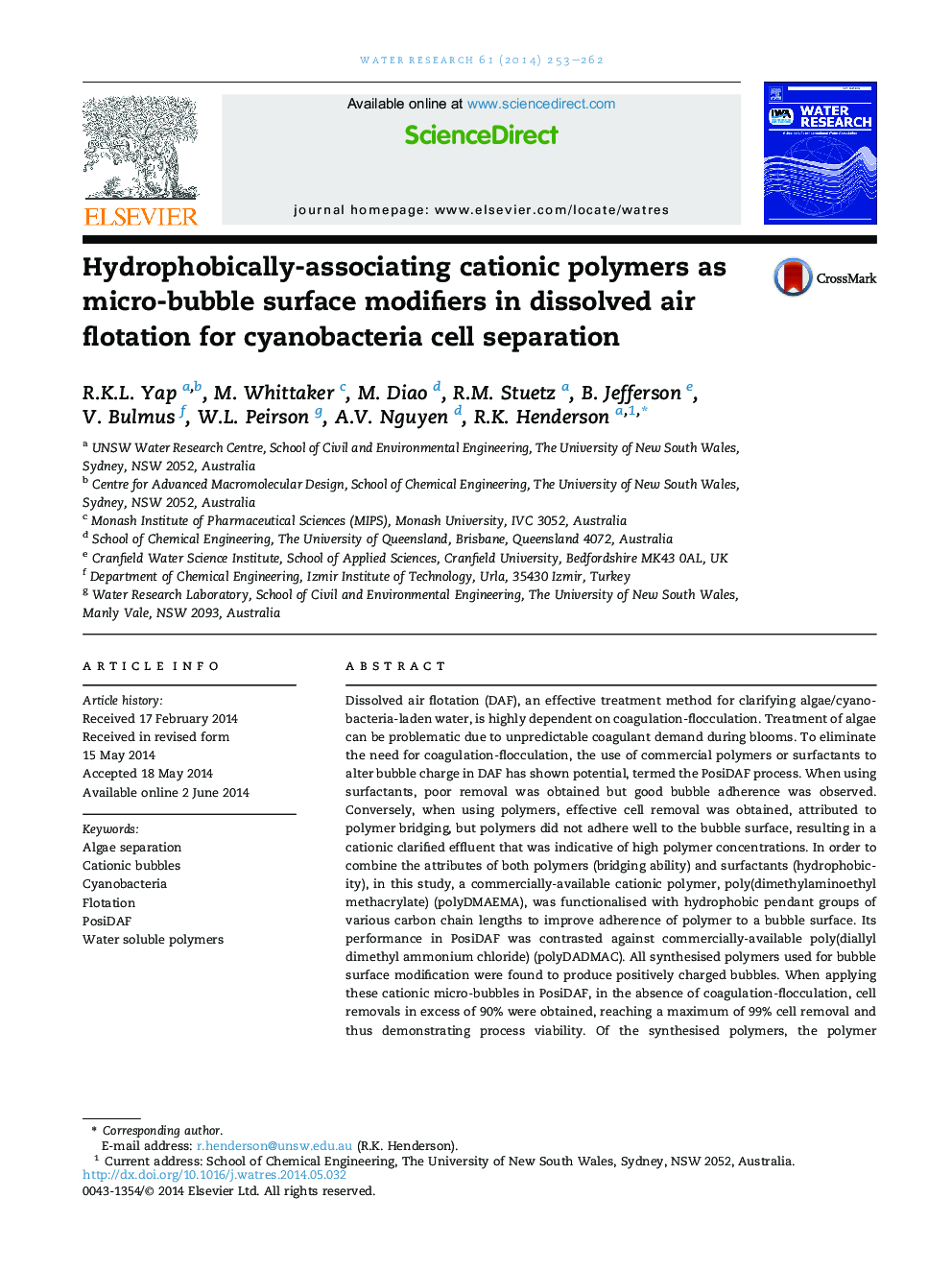| Article ID | Journal | Published Year | Pages | File Type |
|---|---|---|---|---|
| 6366558 | Water Research | 2014 | 10 Pages |
â¢Bubbles modified with polymers were found to have a positive surface charge.â¢Successful cyanobacteria removal from water was achieved using PosiDAF.â¢PosiDAF was found to be comparable to conventional DAF.â¢Effluent zeta potential from PosiDAF could be manipulated by introducing hydrophobic functionality to polymer backbones.
Dissolved air flotation (DAF), an effective treatment method for clarifying algae/cyanobacteria-laden water, is highly dependent on coagulation-flocculation. Treatment of algae can be problematic due to unpredictable coagulant demand during blooms. To eliminate the need for coagulation-flocculation, the use of commercial polymers or surfactants to alter bubble charge in DAF has shown potential, termed the PosiDAF process. When using surfactants, poor removal was obtained but good bubble adherence was observed. Conversely, when using polymers, effective cell removal was obtained, attributed to polymer bridging, but polymers did not adhere well to the bubble surface, resulting in a cationic clarified effluent that was indicative of high polymer concentrations. In order to combine the attributes of both polymers (bridging ability) and surfactants (hydrophobicity), in this study, a commercially-available cationic polymer, poly(dimethylaminoethyl methacrylate) (polyDMAEMA), was functionalised with hydrophobic pendant groups of various carbon chain lengths to improve adherence of polymer to a bubble surface. Its performance in PosiDAF was contrasted against commercially-available poly(diallyl dimethyl ammonium chloride) (polyDADMAC). All synthesised polymers used for bubble surface modification were found to produce positively charged bubbles. When applying these cationic micro-bubbles in PosiDAF, in the absence of coagulation-flocculation, cell removals in excess of 90% were obtained, reaching a maximum of 99% cell removal and thus demonstrating process viability. Of the synthesised polymers, the polymer containing the largest hydrophobic functionality resulted in highly anionic treated effluent, suggesting stronger adherence of polymers to bubble surfaces and reduced residual polymer concentrations.
Graphical abstractDownload high-res image (138KB)Download full-size image
